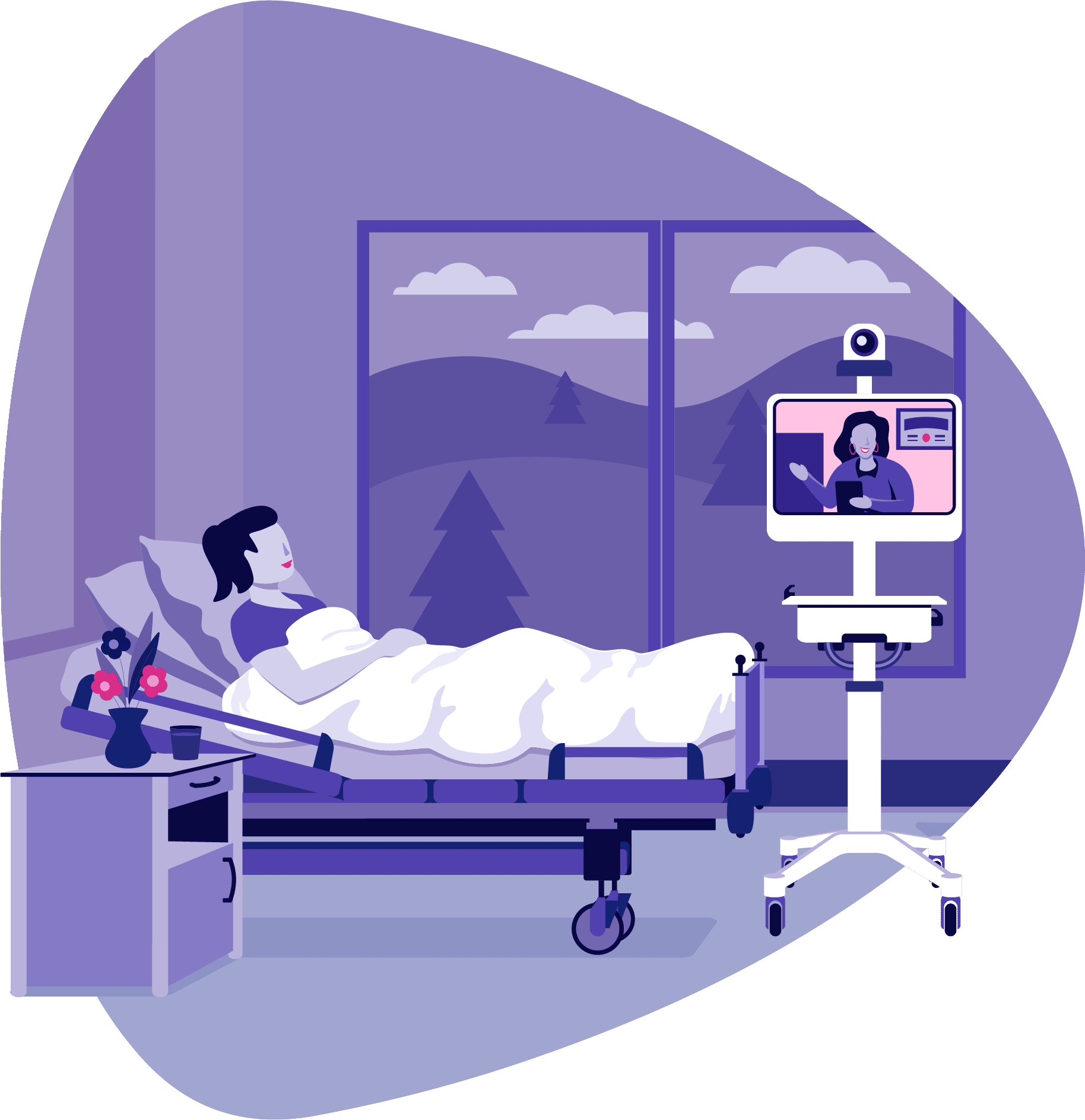Mental health stigma is a serious problem that can cause people to opt-out of treatment for their behavioral health conditions. In fact, a study by the Cohen Veterans Network found that nearly one-third of Americans have worried about others judging them for seeking mental health services. While one-fifth of individuals say they’ve lied to avoid telling people they were seeking mental health care.
Stigma can prove even more challenging for those living in rural communities with limited access to mental health resources. This population deals with unique barriers regarding anonymity in their communities, health literacy, pervasive provider shortages, transportation challenges, and more.
However, despite these barriers, telepsychiatry provides an opportunity for rural communities to receive the same level of treatment as metropolitan areas, helping them overcome stigma and get the care they need.
Keep reading to learn more about rural health stigma, how to address stigma in these communities, and successful community approaches.
How mental health stigma manifests in rural America
Stigma can take shape in many different ways. Whether it’s fear of public stigma or self-inflicted judgment, getting care in rural America isn’t easy. Let’s look at three unique barriers that this population may encounter when seeking care.
- Lack of anonymity: Small towns don’t have the same level of privacy that cities provide. For example, someone is more likely to blend in when walking into a mental health clinic in a metropolitan area. However, it’s more likely that someone could be seen by a neighbor when walking in to get treatment in a small town, or they may even know the person checking them in for their appointment. This lack of anonymity can compromise a person’s feeling of safety and keep them from seeking care.
- Family concerns: Another level of concern associated with stigma is family. People in rural communities may not want their family history or things that have happened in their families to be disclosed to anyone else. There’s a common colloquialism in some rural communities about not “airing your dirty laundry in public.” This mentality can keep someone from opening up to a mental health professional and receiving the care they need.
- Religious barriers: Seeking care for mental health can be viewed as a spiritual weakness or a moral failing in many communities. In fact, a study by the Mental Health & Prevention journal uncovered several common themes related to stigma among rural, low-income healthcare consumers. Some of the top themes were, “faking and pretending,” “get over it,” and “God is all you need.” Additionally, some individuals may view taking psychiatric medications as oppositional to their religion.
While this population may be up against negative sentiments in their communities, there’s also potential to change the dialogue around mental health. And understanding what this community encounters is essential to determining the best way to help them get care and break the stigma.
Three solutions to help break stigma around mental health treatment
Tackling stigma in these communities can happen in several different ways, from education and telepsychiatry to sharing experiences and social media. Let’s take a closer look at these three unique approaches.
- Education: Good education is an essential component to breaking stigma. For example, educating people that the brain is an organ, just like the lungs or the heart, can help them better understand mental health. This education can happen within families, schools, workplaces, and religious organizations. Additionally, healthcare organizations that partner with telepsychiatry vendors like Iris Telehealth can also take an active approach to education that reduces stigma.In their StigmaFree campaign, the National Alliance of Mental Illness (NAMI) encourages people to use respectful language that doesn’t define someone by their illness, challenge misconceptions, and avoid labels. For example, instead of saying, “they’re bipolar,” try saying, “they’re living with bipolar disorder.”
- Increasing access: Access is a significant barrier for people living in rural areas. However, telepsychiatry serves as a creative avenue for support in these communities. This virtual approach allows people to connect to a high-quality, specialty mental health provider from the privacy of their home. Telepsychiatry can enable this population to get help and maintain their anonymity at a community level.The American Psychiatric Association (APA) calls telepsychiatry’s reach into rural and remote areas one of the best successes of telemedicine. The APA also cites that satisfaction has been superior for patients, families, and providers.
- Spreading awareness: According to the APA, about three in four young teens experiencing depression look online to find personal stories from others who have previously suffered from the condition. This data underscores the importance of spreading awareness through sharing stories.Social media can be a powerful platform for those in rural communities. Social media can connect people with support from others who might be dealing with similar conditions. This connection can help people feel less alone, and when people speak up about their mental health, it can be an excellent avenue for reducing stigma.
Taking these steps can help create powerful change for those experiencing the effects of stigma in their daily lives.
Successful approaches to combating stigma in the community
Creating opportunities for behavioral health care in the community is a game-changer for this population.
- Effective programming: Programs that assist with opioid use disorder have been effective in helping reduce stigma. By providing safe injection sites, and implementing harm reduction or replacement therapy, more lives are saved. While these programs are often misunderstood, the more people are educated on the serious outcomes of utilizing substances and how intervention can save lives, the more they understand.
- Organizational solutions: Turning to emergency departments often feels like the best option for individuals living without adequate mental health resources. However, emergency care is costly. That said, hospitals that create opportunities for 24/7 behavioral care access can help better serve their communities with high-quality, on-demand services. Along with this organizational approach, communities can receive grants for crisis centers and other solutions that can help address mental health concerns outside of the emergency room. Instead of waiting for something to become a problem, putting preventive measures in place can be a more effective strategy.
- Telepsychiatry: Finding providers can be a daunting task for organizations in rural communities. For Aroostook Mental Health Services, Inc. (AMHC) in rural northern Maine, recruiting and retaining high-quality behavioral healthcare providers was challenging. Specifically, AMHC needed psychiatrists specializing in children and adolescents and a psychiatrist for consultation help. That’s where Iris Telehealth came in to connect AMHC with high-quality, trained providers. Not only do their patients get the specialty care they need, but their physicians get the consultative support they need before prescribing or diagnosing certain conditions.
Where Iris Telehealth fits in
At Iris, we partner with communities in need of mental health resources. By providing rural populations access to specialty behavioral health providers from around the country, we can help support their needs. Contact us today if you would like to learn more about how telepsychiatry can support your community.



